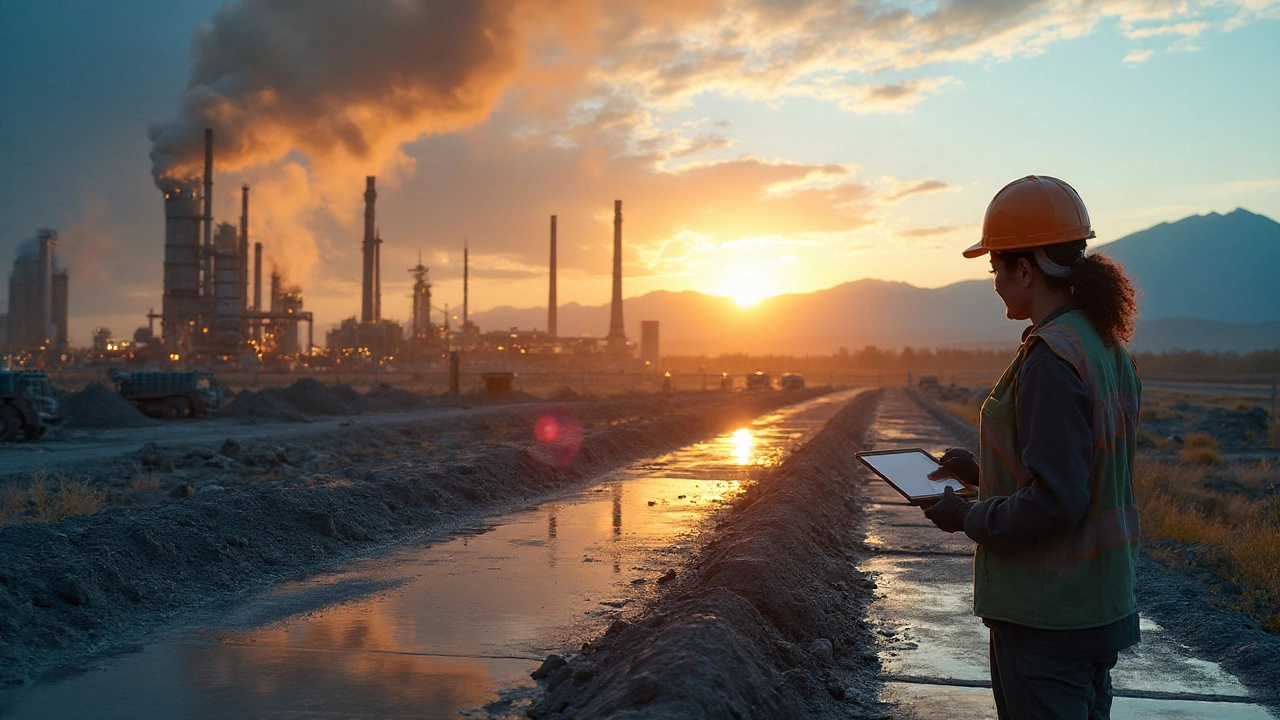Climate & Environment
Welcome to the climate and environment hub. Here we break down big ideas into bite‑size parts so you can see what really matters for the planet. From greenhouse gases to the everyday chemicals that shape our world, we keep it simple and useful.
One of the hottest topics right now is calcium carbonate. You might have heard it mentioned in connection with limestone, chalk, or even antacids, but its role in climate change is often overlooked. That’s why we’ve dug into the science and the facts to show you what helps, what hurts, and what you can do about it.
Why calcium carbonate matters
Calcium carbonate shows up in three main places that affect the climate: cement production, the ocean, and agriculture. In cement factories, limestone (which is mostly calcium carbonate) gets heated to extreme temperatures. That step releases a lot of CO₂ – about 60 % of the emissions from cement. If you drive by a construction site and see a big white plume, that’s the carbon‑heavy side of calcium carbonate at work.
In the ocean, calcium carbonate is the building block of shells and coral. When the sea takes up CO₂, the water becomes more acidic, making it harder for marine life to form those shells. This process is called ocean acidification, and it can thin out coral reefs and hurt fish that depend on them.
Agriculture uses calcium carbonate as a soil amendment to raise pH. It can be a win‑win when it improves crop yields and locks away a bit of carbon in the soil. But if you over‑apply it, you might end up with runoff that harms nearby waterways.
Practical steps and solutions
So, what can we actually do? First, look for low‑carbon cement alternatives. Some companies replace a portion of limestone with industrial waste like slag or fly ash. That cuts the heat needed for production and slashes CO₂ emissions. If you’re buying new concrete, ask the supplier about “green cement” or “low‑carbon mix.”
Second, support marine protection projects that keep ocean pH in check. Coral‑restoration groups often plant hardy coral species that can survive slightly more acidic water. Your donation or volunteer time helps those ecosystems stay resilient.
Third, be smart about using calcium carbonate in gardening. A quick soil test tells you if you really need it. Adding just enough can improve plant health without causing runoff. And if you’re into larger‑scale farming, consider cover crops that naturally raise soil pH over time.
Lastly, keep an eye on new research. Scientists are testing ways to capture CO₂ directly in limestone formations – a process called mineral carbonation. If it scales up, it could turn a climate problem into a storage solution.
Our category page updates regularly with fresh articles, tools, and tips. Bookmark it, check back for the latest findings, and feel free to share what you learn. The climate conversation needs everyone’s voice, and the more we understand, the better choices we can make together.
Calcium Carbonate and Climate Change: Roles, Risks, and Real Solutions (2025 Guide)
- Benjamin Aghaki-Allen
- Climate & Environment
- 0 comment
Does calcium carbonate help or hurt the climate? Clear 2025 guide on cement, oceans, farming, and fixes-what really cuts CO2 and what to avoid.
VIEW MORECategories
Popular posts
-
Female Viagra (Sildenafil) vs. Top Alternatives: A Practical Comparison
Benjamin Aghaki-Allen -
Emphysema Stages Explained: A Complete Guide for Patients and Caregivers
Benjamin Aghaki-Allen -
Wheat Bran Supplement: Boost Gut Health, Lower Cholesterol & Manage Weight
Benjamin Aghaki-Allen -
Claritin (Loratadine) vs Other Antihistamines: Full Comparison Guide
Benjamin Aghaki-Allen -
Buy Cheap Generic Celebrex Online - Safe, Fast & Affordable
Benjamin Aghaki-Allen
Popular tags
- side effects
- online pharmacy
- dietary supplement
- alternatives
- dosage
- gut health
- weight management
- quality of life
- cheap generic Zoloft
- affordable sertraline
- blood pressure medication
- ED medication comparison
- Tadalafil
- comparison
- music therapy
- relapsing-remitting disease
- multiple sclerosis management
- anxiety and fatigue relief
- rhythmic auditory stimulation
- blond psyllium
